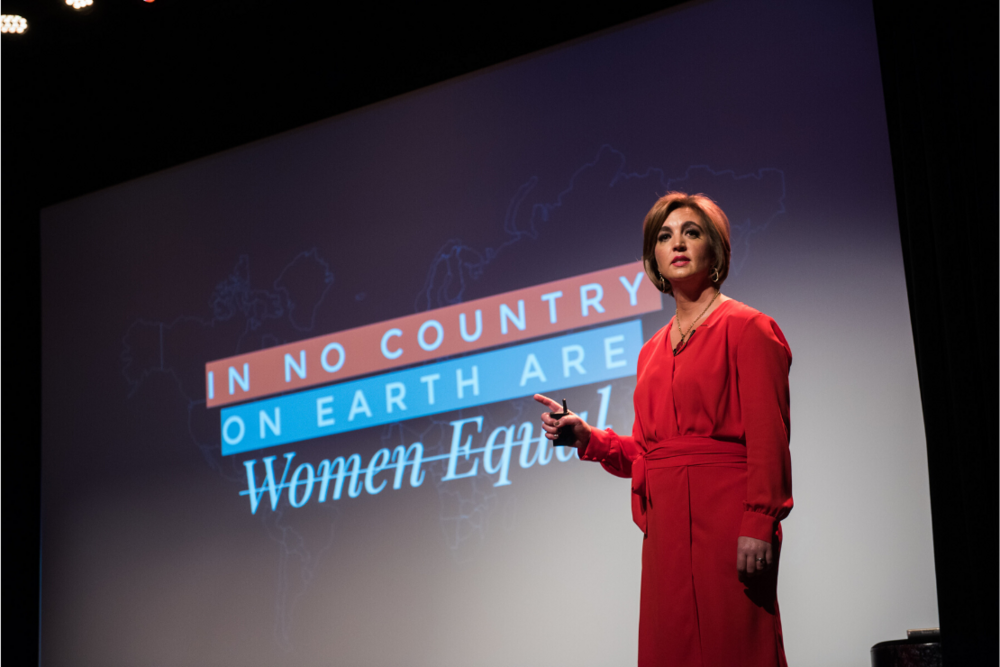Want to Solve a Social Problem? Turn It Into an Economic Opportunity
May 09, 2019

4-min read
Katica Roy, CEO of Pipeline Equity and award-winning business leader, explains her three-step process for turning a social problem, such as the gender equity gap, into an economic opportunity. This process involves deep research, the ability to listen to gain valuable insight and a robust launch. As part of the inaugural class of the Techstars Impact Accelerator, Pipeline received important mentorship from successful business partners.
Katica Roy is on a mission to close the gender equity gap—in her lifetime. And she has a formula for how to do it. It’s a formula that other entrepreneurs can use to tackle other large, seemingly intractable social problems.
The key is to turn a social problem into an economic opportunity.
“If we only view gender equity through the lens of a social issue, of fairness, then it becomes debatable,” Katica said. By making it into an economic issue, she changed the conversation from whether gender equity makes good moral sense to whether it makes good business sense. The latter is much more persuasive to CEOs responsible for maximizing shareholder value.
This was the crucial insight that persuaded Katica to found her company, Pipeline. Pipeline uses AI to increase companies’ financial performance by closing the gender equity gap.
How did Katica turn her critical realization into a successful company? Three steps.
Step 1: Research
“We didn’t start with the tech,” Katica said. “We started with research.”
Katica began with a hypothesis: from the macroeconomic perspective, gender equity is an economic opportunity. Katica and her team conducted research across 4,161 companies in 29 countries and found that for every 10 percent increase in gender equity, there is a one to two percent increase in revenue.
Other research backs her up. A McKinsey Global Institute report from 2015 found that $12 trillion could be added to the global GDP by 2025 by advancing women’s equality. In a 2018 report, Beth Ann Bovino, U.S. chief economist, and Jason Gold, global head of strategic relations and partnerships at S&P Global, found that the U.S. economy would be $1.6 trillion larger than it is today, and grow at a 3.1 percent pace—if women stayed in the workforce at the same pace as they do in Norway.
With the numbers on her side, Katica’s next challenge was to shift the perspective from big picture macroeconomics down to the level of an individual company’s success.
Step 2: Listening
With her research done and her hypothesis validated, Katica could have jumped in and built a platform. But she didn’t. Instead, she spent two months working with her team on a social listening campaign, during which she got 18 million impressions, and gathered a lot of valuable insights.
According to Katica, this was an absolutely essential step in the process: “In order to change the narrative around gender equity, you have to include more voices.”
After all, as she points out, “Gender equity is often viewed as a synonym for women’s rights. However, women are 50% of the conversation, men are the other 50%.” Katica doesn’t want to impact just women or families—she wants to make the world better for everyone.
“For me, this was a deeply personal obligation,” Katica explained. “Millions of people are impacted by a lack of gender equity. We need to be considerate. If we do this badly, we could do damage, and set back the conversation. For us, being thoughtful and inclusive is very important.”
Listening closely to what others had to say about gender equity was a crucial step toward building Pipeline, and building it right.
Step 3: Launch
Pipeline launched its first version in late in 2017 and the full version a few months later. Being mission-driven has helped Katica get both help and recognition for her company.
Last summer, Pipeline was a member of the inaugural class of Techstars Impact Accelerator. She went into the program looking for mentors. She wanted mentors “who didn’t think like us—because we can do that already pretty well.” She wanted people who could point out her team’s blind spots and help refine the product, as well as guide their marketing, PR, and sales efforts. The mentors in the program were everything Katica was looking for.
Though the company is still young, Pipeline, and Katica are already winning awards. From AI Breakthrough Awards for their technology and design to a Gold Stevie® Award (from International Business Awards) that lauded both Pipeline’s mission and business ability. Katica also received recognition from the Denver Business Journal, being named as a 2018 Outstanding Woman in Business. People are clearly taking notice. Most SaaS companies could only dream of this kind of endorsement, but the world-changing mission of the company—along with its excellent execution—elevate Pipeline’s profile.
Getting From There To Here
For other entrepreneurs who are on a mission to make the world a better place, Katica’s process can provide a template for success.
Want to get people, businesses, or governments to change? Find a way to make your passion project an economic necessity. Create a hypothesis about how this works, then do the research to test it. Listen to not just your customers, but also everyone else who cares about your cause as much as you do. Then perfect your tech and launch a great business.
Techstars is dedicated to helping entrepreneurs succeed because we believe entrepreneurs make the world a better place. Katica and Pipeline certainly are. And by following their model, you can, too.
Learn more about how to be a great mentor: read the Techstars Mentor Manifesto.
